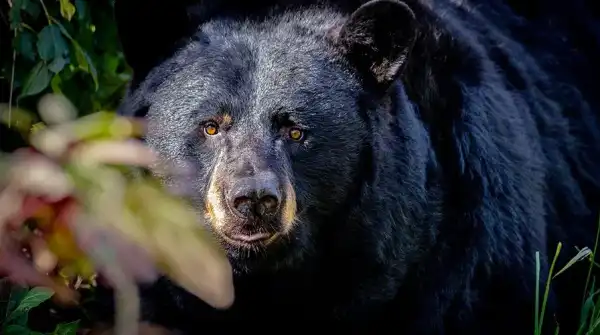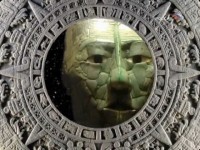
Throughout recorded history, humans have been preoccupied with the question of their origins. Various world cultures, in their religious texts, have answered this question in the same way: humanity was created by gods or by God.
In the Sumero-Acadian culture, humanity was believed to have been created from the blood and earth of the goddess Tiamat. In Greek and Roman culture, humans were also created by the gods. The Egyptians believed that humans were the product of the gods' creation, and, as was often the case among Eastern peoples, the pharaoh was a direct descendant of these same gods. In the ancient Hebrew belief, humanity was created by God. Christianity adopted the theory of the creation of the first humans by God.
It turns out that all the great world civilizations, whether they have ceased to exist or still exist, proceeded from the idea of intervention in the history of the world by beings called gods.
Of course, as humanity evolved, it came to the conclusion that its origins were determined by natural processes. As a result of natural mutations, living organisms evolved to the point where they became capable of thought and willpower, rather than acting on instinct. Followers of the theory of evolution are extremely hostile to proponents of another viewpoint, known as creationism (creation—to create). This theory arose in religious circles, and its adherents believe that humans are God's creation.
Modern science does not consider theories regarding the intervention of intelligent beings in the origin of humankind. However, in fact, Darwinists and creationists are not very far apart. Followers of the theory of evolution believe that intelligent beings emerged from human-like creatures as a result of some inexplicable process. Scientists from the University of California, based on many years of research, have concluded that a pair of creatures emerged among our ancestors, which became the ancestors of modern humans.
Does this sound like a story the Bible tells? The reader might think it's just a coincidence, but let's recall the story of God's creation of the first humans in Paradise. This narrative is familiar to most people, so there's no point in retelling it. Note that after creating the first human, God named him Adam, which means “red clay.” Considering the translation of Eve's name (“life-giver”), the first human's name seems meaningless. However, another interpretation exists: the name Adam can be translated as “living clay.” In this case, it can be assumed that God used existing living organisms to create humans. It follows that an anthropomorphic being that inhabited the earth became the basis for the creation of humans, or for significant mutations. These mutations are precisely what followers of Darwinism and recent research at the University of California suggest.
All ancient peoples had a similar understanding. It turns out that we have fragments of the same puzzle, which we try to interpret in different ways, but are unwilling to try to see the whole picture.
Academic science denies the possibility of artificial origins for humanity. However, such a theory has a right to exist due to the discovery of artifacts that do not fit into the modern scientific model. Unfortunately, the discovery of these “inconvenient finds” is not publicized, so the public remains unaware of the existence of such artifacts.
However, evidence is irrefutable. A huge number of monumental sites have been preserved around the world that testify to contact between aliens and human ancestors.
One of the most phenomenal discoveries is the discovery of a burial site belonging to the Mousterian culture (100,000–30,000 BC). Aside from the remains of several individuals (presumably Neanderthals) in the graves, which is surprising, according to official science, Neanderthals did not inhum their dead. Primitive tools were discovered, and figurines of human-like creatures were also found in the pits. Naturally, this discovery caused quite a stir in the scientific world, as the modern theory of human evolution holds that the creation of such objects became available to humanity much later. The discovered figurines represent an attempt to depict a human-like creature. The figurine's head has a strange elongated shape, and its arms are longer than those of ordinary humans. How such an object ended up in such an ancient burial remains unclear. Scientists have speculated that the finds were a forgery, and research in this area has since ceased.
It would seem that the story of the strange figurines had been forgotten, but in 2011, an event occurred that renewed interest in the mysterious find discovered in the Neanderthal grave.
Anthropologist David Renato discovered the remains of creatures with a highly unusual skull structure in the mountains of Peru. A total of five skeletons were recovered, two of which were female, while the others belonged to males.
The skulls are elongated, and the eye sockets are much larger than those of modern humans. DNA testing has shown that humans have very little in common with this creature.
Another similar discovery was made in Egypt. On the outskirts of Feitah, British archaeologists discovered a rather strange burial site. Clearly, it was the resting place of noble people, but the tombs lacked jewelry and other necessary items for the afterlife. After opening the burial, the scientists discovered well-preserved, mummified remains. The archaeologists were particularly surprised by the strange, elongated shape of the head and the large eye sockets. Perhaps this reminds them of something?
After conducting slave research on the strange mummies, it was discovered that the DNA differed from the human genome.
Not far from this burial site, another interesting discovery was made by chance. A soil shift due to excavations exposed the entrance to a cave. A strange sarcophagus was discovered in this cave. It contained the mummy of a pregnant woman. Interestingly, the fetus inside had a strange, elongated skull, while the mother had a perfectly normal head. DNA analysis of the fetus revealed that it was identical to samples taken from the creatures in the main burial site. Even more astonishing is that the mother's DNA was human.
In 2012, a strange burial site was discovered near the town of Kugali. The mass grave contained over 200 skeletons. All had elongated skulls, and their eye sockets were significantly larger than those of modern humans. DNA analysis revealed that these creatures were not human. Even more fascinating is that the oldest remains, lying at the bottom of the pit, are believed to be over 2,000 years old, while the topmost remains are no more than 500 years old.
The world is full of mysteries. Scientists are increasingly discovering artifacts and burial sites that don't shed light on human history. Instead, they add to the mystery that conventional science can't solve. Therefore, most of these “inconvenient finds” are simply hidden away in museums and storage facilities.





